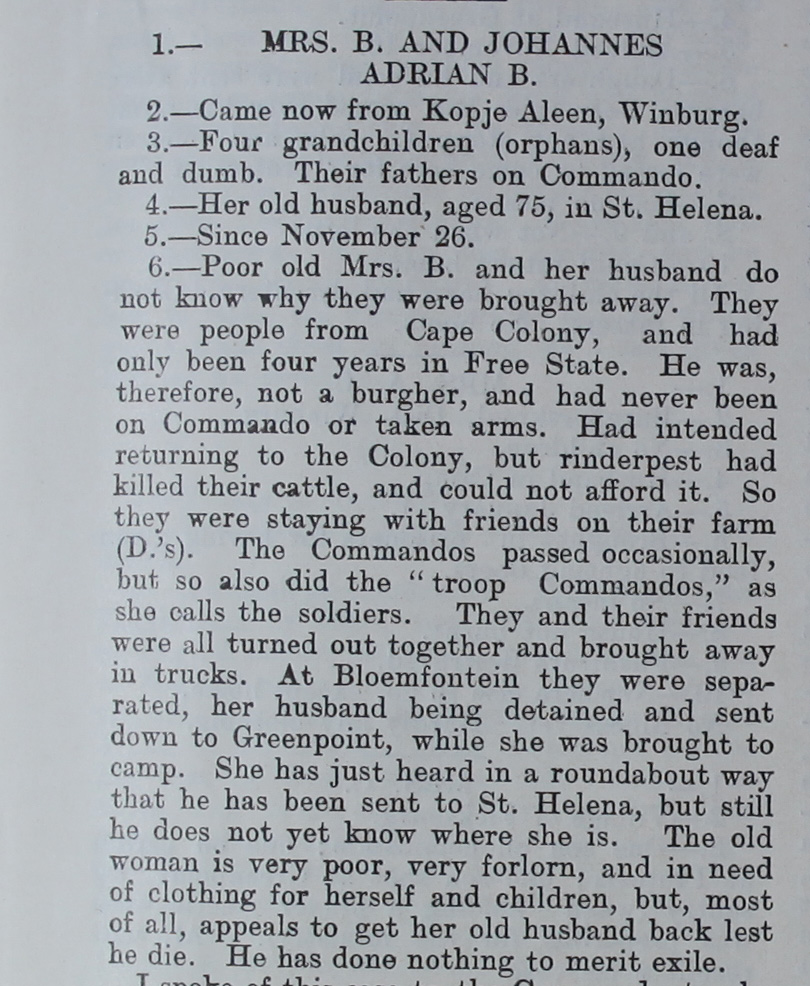
1 – MRS. B AND JOHANNES ADRIAN B.
2 – Came now from Kopje Aleen, Winburg.
3 – Four grandchildren (orphans), one deaf and dumb. Their fathers on Commando.
4 – Her old husband, aged 75, in St Helena.
5 – Since November 26.
6 – Poor old Mrs. B. and her husband do not know why they were brought away.
They were people from Cape Colony, and had only been four years in Free State. He was, therefore, not a burgher, and had never been on Commando or taken arms. Had intended returning to the Colony, but rinderpest [type of cattle disease] had killed their cattle, and could not afford it. So they were staying with friends on their farm (D.s). The Commandos passed occasionally, but so also did the “troop Commandos”, as she called the soldiers. They and their friends were all turned out together and brought away in trucks. At Bloemfontein they were separated, her husband being detained and send to Greenpoint, while she was brought to camp. She has just heard in a roundabout way that he has been sent to St Helena, but still he does not yet know where she is. The old women is very poor, very forlorn, and in need of clothing for herself and children, but, most of all, appeals to get her old husband back lest he die. He has done nothing to merit exile.
Look at Source 8.
Extracts 8a-d from a report ‘To the Committee of the Distress for South African Women and Children’, compiled and written by Emily Hobhouse to investigate the mistreatment of those held in British camps, which includes reports and letters after visiting many of them, 1901, Catalogue ref: WO 32/8061
The latter stages of the war had descended into guerrilla warfare, and refugee camps had initially been set up to shelter civilian families. The British policy, under Lord Kitchener, of burning farms and homesteads to prevent the Boers from accessing supplies soon resulted in an influx of civilians into these ‘concentration camps’ or refugee camps. In total, forty-five camps were built for Boer internees, and an additional sixty-four were built for black Africans. It is estimated that 26,000 Boer women and children died, as well as over 14,000 black inmates, mainly as a result of disease and malnutrition.
- What do these extracts reveal about living conditions in these camps?
Read again those extracts which relate to individuals/families in camps. Explain the following:
- Why were they brought to the camp?
- What had they done?
- Were other members of their family directly involved in the war in some way?
- What was the state of their health whilst in the camp?
- How does this system of ‘concentration camps’ represent a war against civilians?
- What can be inferred about the impact of the war against the civilians of South Africa in terms of (a) its economy (b) its population (c) Boer fighters?
